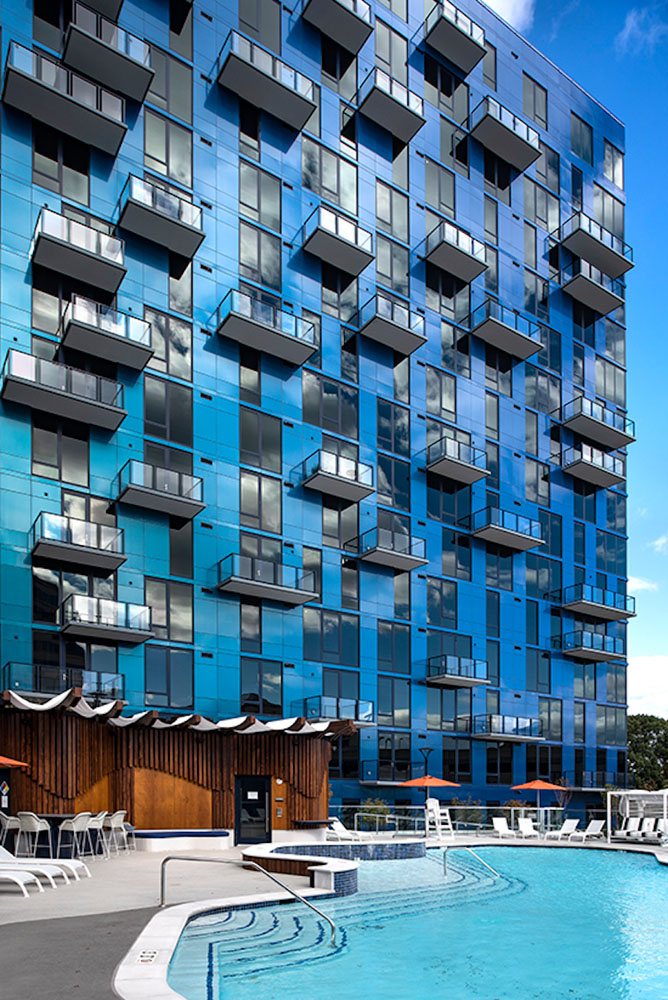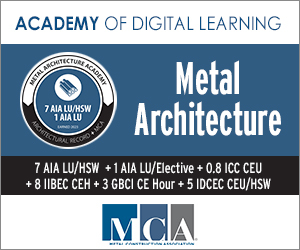Individual Parts Bring a Greater Whole
 1 AIA LU/HSW; 1 IDCEC CEU/HSW; 0.1 ICC CEU; 1 IIBEC CEH; 0.1 IACET CEU*; 1 AIBD P-CE; AAA 1 Structured Learning Hour; This course can be self-reported to the AANB, as per their CE Guidelines; AAPEI 1 Structured Learning Hour; This course can be self-reported to the AIBC, as per their CE Guidelines.; MAA 1 Structured Learning Hour; This course can be self-reported to the NLAA.; This course can be self-reported to the NSAA; NWTAA 1 Structured Learning Hour; OAA 1 Learning Hour; SAA 1 Hour of Core Learning
1 AIA LU/HSW; 1 IDCEC CEU/HSW; 0.1 ICC CEU; 1 IIBEC CEH; 0.1 IACET CEU*; 1 AIBD P-CE; AAA 1 Structured Learning Hour; This course can be self-reported to the AANB, as per their CE Guidelines; AAPEI 1 Structured Learning Hour; This course can be self-reported to the AIBC, as per their CE Guidelines.; MAA 1 Structured Learning Hour; This course can be self-reported to the NLAA.; This course can be self-reported to the NSAA; NWTAA 1 Structured Learning Hour; OAA 1 Learning Hour; SAA 1 Hour of Core Learning
Learning Objectives:
- Explain what a metal composite material (MCM) is and how it is produced.
- Review the available options for MCM skins, including finishes, materials, and specifications, and how these aesthetic options can elevate occupant experience.
- Discuss how MCM skins promote sustainability and practicability of the structure through its life cycle, shielding it from everyday wear and leading to enhanced building durability and health.
- Describe the attributes of MCM core material and how these benefit occupants and create a safer structure during fires.
- Debate the benefits MCM provides, including those related to environmental concerns, efficiency, and economy. Demonstrate how MCM, as a designed material bolsters structural lifespan, green goals, and the well-being of users.
This course is part of the Metal Architecture Academy
Standard Core Material
When ACM was first introduced to North America, the common core material was an extruded polyethylene. Many of the standard products available today continue to use this type of core. The common practice is to extrude a flat layer of core material that was bonded to the metal skins in a single continuous process. This bonding method allows the use of the heat, pressure, and tension to aid in the creation of the composite panel.
The standard core material meets all of the code requirements for panel use up to 40 feet above grade. The primary criteria governing standard core material is ASTM E84, which measures the surface flame spread of a material. The code requires this value to be less than 25. As a point of reference, the flame spread of a red oak flooring panel is used as a baseline and equated to a value of 100. The performance of the panel is considered in whole, so the metal skin material protects the core material from contributing to the fire during initial exposure.
There are other plastic materials that have been used successfully in place of polyethylene; however, the industry definition of an MCM is a panel that contains a solid plastic core bonded in a continuous process. The batch process does not meet the intent of this MCM panel criteria.
Companies have promoted core color or core density as a performance attribute; however, the most important points regarding the core remain:
- Solid core material: The skins of ACM are relatively thin (0.019 inch) and can easily telegraph any surface imperfection, including a discontinuity in the core, such as a honeycomb or corrugated core would produce. Higher-gloss or highly reflective finishes exaggerate these discontinuities and lead to visual problems with the panel and finish.
- Bond strength between the core and skins: The standard is set at 22.5 inch-pounds/inch for the bond strength between the core and skin material. This strength was not a simple shear or tension test, but rather a peeling test that demonstrates that the material will not delaminate over time. This test, ASTM D1781, has been used by this industry since the 1980s and is included in the acceptance criteria (AC25) used to develop evaluation reports for MCM products and systems.
Fire-Resistive Core Material
As MCMs gained in popularity for their aesthetic opportunities and performance attributes, the application of MCM cladding expanded into high-rise construction.
Concern over fire performance is different once the cladding is used above 40 feet.
In the United States, NFPA 285 has been developed to exhibit relative real-world fire performance. A similar test has been developed for Canadian use, NRC/ULC S134. The Class A flame-spread certification remains an additional requirement for those MCMs to be used above 40 feet.
The 2012 IBC established criteria to determine when a standard or fire-retardant core must be used. The major elements that dictate the type of core material to use include: panel height above grade or grade plane; wall construction type (rated or non-rated fire assemblies); and proximity to the property line or other structures within the property boundaries. The alternative performance criteria to NFPA 285 for MCM is referenced in the 2018 IBC in Sections 1406.10 and 1406.11 and include testing requirements, including ASTM E84, ASTM D635, ASTM D1929, and NFPA 285. Use of these sections is complex and should be considered only after discussion with the MCM manufacturer.
Typically, a manufacturer’s standard panel material meets the performance requirements for the first three tests only, while the fire-retardant core material meets the performance requirements of all four test standards. When the construction conditions are within the limitations outlined below, a combination of some or all of the first three fire tests are required in the IBC, and a standard core material can be used. When these installation conditions are not within the defined limitations, either the fire-retardant core material must be used, or the authority having jurisdiction (AHJ) must accept the material in accordance with Section 104.11. Should the building require fire-rated construction, another important consideration is whether the manufacturer of the MCM has performed third-party-verified testing to show compliance with the requirements of the applicable fire tests.
Generally, MCM is required to meet the performance criteria of NFPA 285 when installed higher than 40 feet above the grade plane. However, there are certain installation conditions that may allow use up to a height of 75 feet above the grade plane without this requirement. The applications are defined in Section 1406 and are based on the allowable use of other combustible materials throughout the code.
In the 2018 IBC, the use of combustible materials on all construction types to a height of 40 feet above grade plane is allowed. The only limitation is a fire-separation distance of less than 5 feet. If that limitation cannot be met, a fire-retardant material or AHJ acceptance must be obtained. Installations of standard core MCM up to 50 feet above grade plane are defined in Section 1406.11.2 and based on the allowable use of plastic veneer defined in Chapter 26. If the ASTM D1929 and section size and vertical separation of section limitations cannot be met, fire-retardant material must be used.
There is no single formulation of fire-retardant core material required to meet code criteria. Each MCM manufacturer develops its own formulation and production parameters. The most common solution is to replace a portion of the combustible material found within the core material with either fire-retardant chemistry or an inert filler that would not promote flame spread.

Photo courtesy of 3A Composites USA
EXO APARTMENTS, RESTON, VIRGINIA
MCMs offer exceptional design opportunities while providing reliability, economy, and environmental benefits.












